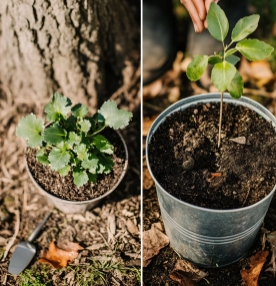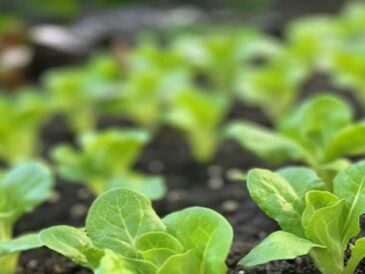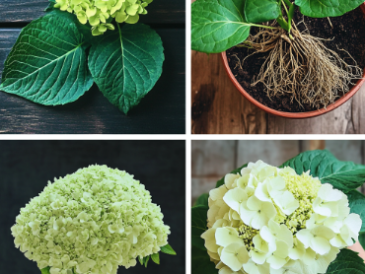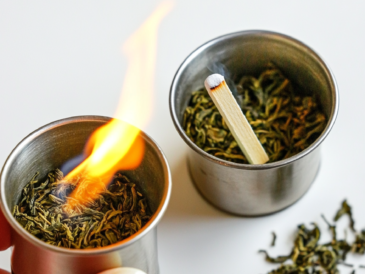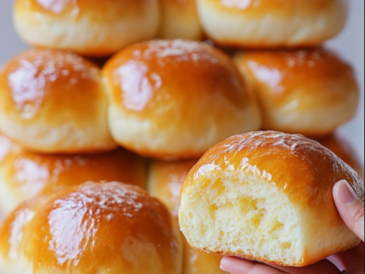Planting fruit bushes and canes in the fall is a brilliant way to guarantee a bumper crop of berries next summer! The cooler temperatures and frequent rain give the roots time to establish before winter, setting you up for success when spring arrives. Whether you’re craving juicy raspberries or tart gooseberries, here are 20 types of fruit bushes and canes you can plant this fall, plus some essential tips to keep in mind.
1. Raspberries
Varieties: Summer-bearing, ever-bearing
What to Know: These delicious berries love well-drained, rich soil. Make sure they get full sun, and trellising is a must to keep them supported as they grow.
2. Blackberries
Varieties: Thorny, thornless
What to Know: Blackberries need rich, well-drained soil and plenty of sunlight. Prune canes after fruiting for a bigger crop next year.
3. Blueberries
Varieties: Highbush, lowbush, rabbiteye
What to Know: Blueberries need acidic soil (pH 4.5-5.5) and a sunny, sheltered spot. Plant different varieties for better pollination.
4. Strawberries
Varieties: June-bearing, ever-bearing, day-neutral
What to Know: They need fertile, well-drained soil and lots of sunlight. Mulch in the fall to protect them from frost.
5. Gooseberries
Varieties: European, American
What to Know: Gooseberries are hardy and shade-tolerant but prefer full sun for best fruit production.
6. Currants
Varieties: Red, black, white
What to Know: Thriving in cool climates, currants prefer slightly acidic soil and tolerate partial shade.
7. Elderberries
Varieties: American, European
What to Know: These low-maintenance bushes love well-drained soil and can grow in full sun or partial shade.
8. Loganberries
What to Know: A cross between raspberries and blackberries, Loganberries need trellising and well-drained soil with full sun.
9. Boysenberries
What to Know: Another blackberry-raspberry hybrid, Boysenberries thrive in slightly acidic, well-drained soil and full sun.
10. Tayberries
What to Know: Tayberries also need trellising and a sunny location. Well-drained soil is a must for maximum fruit production.
11. Lingonberries
What to Know: Perfect for cooler climates, lingonberries prefer acidic, sandy soil and thrive in partial shade.
12. Jostaberries
What to Know: This blackcurrant-gooseberry hybrid loves well-drained, fertile soil and can handle partial shade.
13. Honeyberries
What to Know: Honeyberries are super cold-hardy and love acidic soil. They thrive in full sun to partial shade.
14. Huckleberries
What to Know: Huckleberries prefer acidic, well-drained soil and grow best in partial shade.
15. Marionberries
What to Know: Marionberries, a type of blackberry, love fertile, well-drained soil and full sun for large, sweet berries.
16. Mulberries
Varieties: Red, white, black
What to Know: These easygoing plants thrive in rich, well-drained soil. Full sun ensures the best fruit production.
17. Aronia Berries (Chokeberries)
What to Know: Aronia berries are cold-hardy and prefer moist, well-drained soil. They tolerate full sun or partial shade.
18. Cranberries
What to Know: Cranberries thrive in acidic, sandy soil and need consistent moisture—perfect for boggy conditions.
19. Cloudberries
What to Know: These thrive in cool, acidic, and moist environments—perfect for those with wet soils!
20. Sea Buckthorn
What to Know: Sea buckthorn is drought-tolerant and fixes nitrogen in the soil. It loves sunny, well-drained spots and can handle tough conditions.
Things You Need to Know Before Planting
1. Soil Preparation
Most berries thrive in well-drained, fertile soil enriched with compost or organic matter. Ensuring proper drainage and fertility is key for plant health.
2. pH Levels
Some berries, like blueberries, need acidic soil (pH 4.5-5.5). Test your soil before planting and amend with sulfur if necessary.
3. Location
Most berry plants love full sun (at least 6 hours a day). However, currants and gooseberries can handle partial shade.
4. Spacing
Ensure good air circulation by spacing your plants 2-4 feet apart (depending on variety). This helps prevent disease.
5. Mulching
Mulching with straw, wood chips, or pine needles retains moisture, cools the soil, and keeps weeds at bay.
6. Watering
Young plants need consistent watering until they establish. During dry spells, make sure to water regularly for a healthy crop.
7. Trellising and Support
Cane berries like raspberries and blackberries need trellising for support. Keeping canes off the ground improves air circulation and reduces disease risk.
8. Pest and Disease Control
Birds love berries, so consider netting during the fruiting season. Keep an eye out for pests like aphids and spider mites. Proper spacing helps minimize diseases.
By planting your fruit bushes and canes this fall, you’ll set them up for a strong start next spring, ensuring a bountiful harvest of fresh, juicy berries all summer long! 🍇🌸
